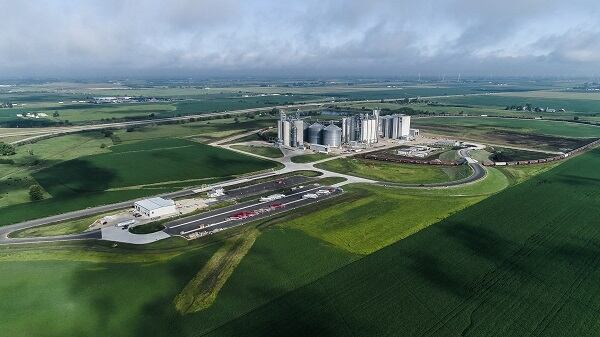An “industry first” in kind and scale, ADM says, the milestone will help manufacturers that source from it reduce their carbon footprint at a time when consumers increasingly are seeking more sustainable options and adopting climatarian dietary practices.
The achievement also helped ADM reach is 2020 environmental goals ahead of schedule and pushed it closer to its goal of reducing greenhouse gas emissions by 25% and energy intensity by 15% by 2035 compared to 2019.
‘Energy treasure hunts’ reveal large and small ways to reduce emissions
Today’s announcement marks more than a decade of work by ADM to reduce and offset emissions at its US flour milling operations, including “energy treasure hunts,” where specialized teams visited facilities in person or virtually during the pandemic to “explore how we’re using energy and ways we can use it more in a more efficient manner,” said Chris Cuddy, ADM SVP & president, carbohydrate solutions.
He explained to FoodNavigator-USA that the teams would look for low hanging fruit or adjustments that don’t require a lot of capital, but when combined have a significant impact.
“So, whether it’s recycling heat, recycling water, using LED lights, for example, which is kind of a simple one we can all relate to because we do it in our homes, too, these specialized teams find ways to lower the energy footprint,” he said.
This strategy is possible because as a “big, broad company with expertise across many different industries,” ADM is able to “take these wins from segment to segment, or take learnings and spread them across all of our business units,” he added.
Updated, state-of-the-art facilities help slash emissions
ADM also significantly reduced the emissions at its US flour milling operations by shuttering old mills with outdated technology and replacing them with more efficient, state-of-the-art facilities, Cuddy said.
This included a new facility in Medota, Ill., which when it opened in fall of 2019 was the largest flour mill built from the ground up in North America.
The 30,000 cwts mill includes “three milling units with centralized monitoring to ensure performance, consistency and security of supply,” a new lab with modern quality control equipment and an onsite transportation company that uses radio-frequency identification technology to ensure efficiency and accuracy, according to ADM.
In addition to opening new facilities, ADM this spring also completed a carbon capture and storage project adjacent from its corn processing plant in Decatur, Ill.
With help from the Midwest Geological Sequestration Consortium by the US Department of Energy, the Illinois Basin-Decatur Project is able to accept and store one million metric tons of carbon dioxide over a period of three years, which ADM says is equal to annual emissions of 1.2 million passenger cars.
“This is a big, big part of what was involved to get us to zero carbon neutrality for these mills,” Cuddy said.
He explained that project includes drilling wells and testing carbon dioxide sequestration using a “fairly pure carbon” from its fermentation facilities that can be dehydrated and compressed “in a pretty efficient manner and then sequestered into this basin where we think it can be stored forever.”
‘Becoming more sustainable is a big deal for our customers’
ADM was able to close the final gap on its US milling emissions by purchasing renewable energy certificates.
“While [the certificates] may not be part of our program, they are continuing to encourage folks around the world to produce renewable energy - -so we think that’s important,” Cuddy said.
He added that overtime ADM may shift some of those offsets to do more work internally to continue to reduce the company’s own manufacturing footprint and create a more efficient and sustainable business.
Ultimately, these changes are not only good for ADM and the planet but also for ADM’s partners, Cuddy said.
“Becoming more sustainable is a big deal for our customers and I’m excited to see what they do with it, how they promote it on their packaging and labels to showcase to their consumers what they’ve been able to do to reduce their carbon footprint through their supply chain,” he explained.
He added this change comes at a pivotal time when consumer interest in sustainability is increasing.
According to Euromonitor’s 2020 International Lifestyle Survey, 68% of consumers worry about climate change, 37% want to reduce their personal carbon emissions, 22% are offsetting their carbon footprint and 67% support carbon labeling.
“We’re happy to be a provider of that,” and help manufacturers and consumers achieve their sustainability goals, Cuddy said.

